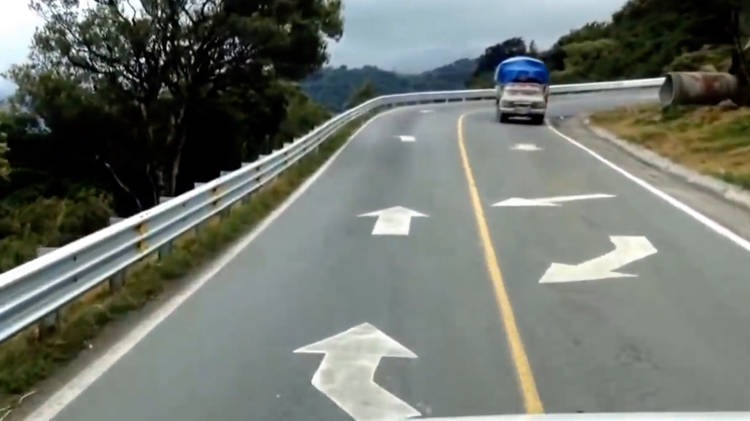Tackling tight curves on winding mountain roads is complicated enough as it is, but having to randomly drive on the opposite side of the road makes it confusing as well.
Mexico’s Cumbres de Acultzingo or Acultzingo Heights is a mountainous area in the country’s Veracruz State traversed by a winding road that truck drivers found notoriously hard to traverse due to its tight curves. Because large vehicles couldn’t descend through some of these curves without going on the inside lane and causing frequent accidents, someone came up with the idea of switching up the lanes in these tricky sections. These days, driving on the Serra de Acultzingo, as the road is known, you constantly have to pay attention to the road markings and drive on the wrong side when asked to.

Before you need to perform the so-called ‘lane dance of Acultzingo’, you’ll see clear road signs that read”Opposite Curve Section Begins,” accompanied by markings on the asphalt pointing out that you need to switch to the opposite lane. Still, doing it in real-time and seeing vehicles coming from the opposite direction driving straight at you will make your heart race the first time you pass through Acultzingo Heights.
The lane changes usually coincide with the tightest curves on Serra de Acultzingo, making it easier for heavy vehicles to turn, and, according to some sources, the bizarre method has actually led to a decrease in accidents on this road.
Although the seemingly confusing system appears to work as intended, it is best to tackle the mountain curves of Acultzingo during the day, and at times when fog isn’t an issue, because visibility of the lane dance signs can be the difference between life and death.
Driving speeds on this winding road are usually very low but a head-on-collision is dangerous in any scenario, let alone on a mountain road.






